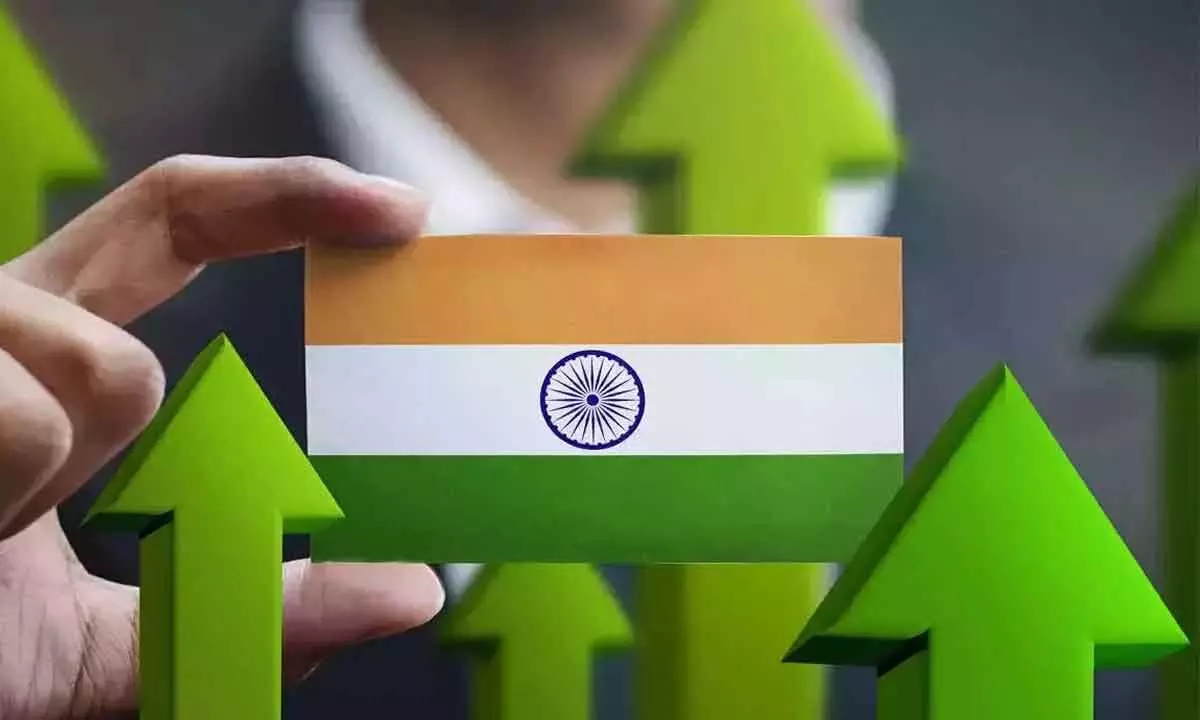7% growth feasible for India in FY25, beyond
RBI MPC member Bhide says favourable monsoon, higher farm productivity will support growth
image for illustrative purpose

FDI inflows have been strong in the past few years in response to the various policy reforms along with the attraction of a fast growing economy. One reason for the slowdown now may also be the slow pace of global demand recovery - Shashanka Bhide, Member, RBI Monetary Policy Committee
New Delhi: Sustaining the economic growth momentum of 7 per cent in 2024-25 and beyond is feasible on the back of favorable monsoon, higher farm productivity and improved global trade, RBI Monetary Policy Committee (MPC) Member Shashanka Bhide said on Monday.
During 2023-24, the economy is likely to record a growth rate of near 8 per cent on account of good performance of manufacturing and infrastructure sectors. “(India’s economic) Growth in the current year is likely to be supported by agriculture with a favourable monsoon and improved global trade. Sustaining the growth momentum of 7 per cent seems feasible,” he said.
Bhide further said that in the long-term, the need for productivity improvements will remain the key factor to achieve food price stability.
Asked as to what are some of the headwinds he is wary of, Bhide said one area of concern is the global environment. “The slow pace of recovery in global demand on one hand and supply chain disruptions on the other hand... if the ongoing geopolitical conflicts are not resolved quickly, (it will) pose significant challenge in terms of demand as well as input prices. We should also be prepared for minimising the adverse impact of extreme weather events on output,” he said.
Recently, the International Monetary Fund (IMF) raised India’s growth projection to 6.8 per cent for 2024 from its January forecast of 6.5 per cent, citing bullish domestic demand conditions and a rising working-age population.
The Asian Development Bank (ADB) also raised India’s GDP growth forecast for the current fiscal to 7 per cent from 6.7 per cent earlier, saying the robust growth will be driven by public and private sector investment demand and gradual improvement in consumer demand.
Asked what is the long-term solution for high food prices, Bhide noted that one aspect of high food inflation in the recent years has been the impact of weather conditions on the perishable commodities such as vegetables.
According to him, although such price spikes may be short-term, their impact is significant. As many have pointed out, Bhide said processing and preservation of commodities that help in their storage would be a part of the solution in the longer term, just as the supply-side measures that help raise crop resistance to adverse weather.
While noting that the investments in market infrastructure, modernisation of markets for agricultural commodities to help improve supply response to changing demand conditions would also reduce the excessive price spikes, he said. “In the long-term, the need for productivity improvements will remain the key factor to achieve food price stability.”
The eminent economist observed that inflation has remained above the policy target for several countries. “There are also differences in the growth conditions, with some countries experiencing significant slowdown while some experiencing reasonable positive momentum,” he said, adding that the priority towards bringing down inflation rate to the target appears to be keeping the monetary policies restrictive.
Responding to a question on slowing down of foreign direct investment in India, Bhide said the FDI inflows have been strong in the past few years in response to the various policy reforms along with the attraction of a fast growing economy.

